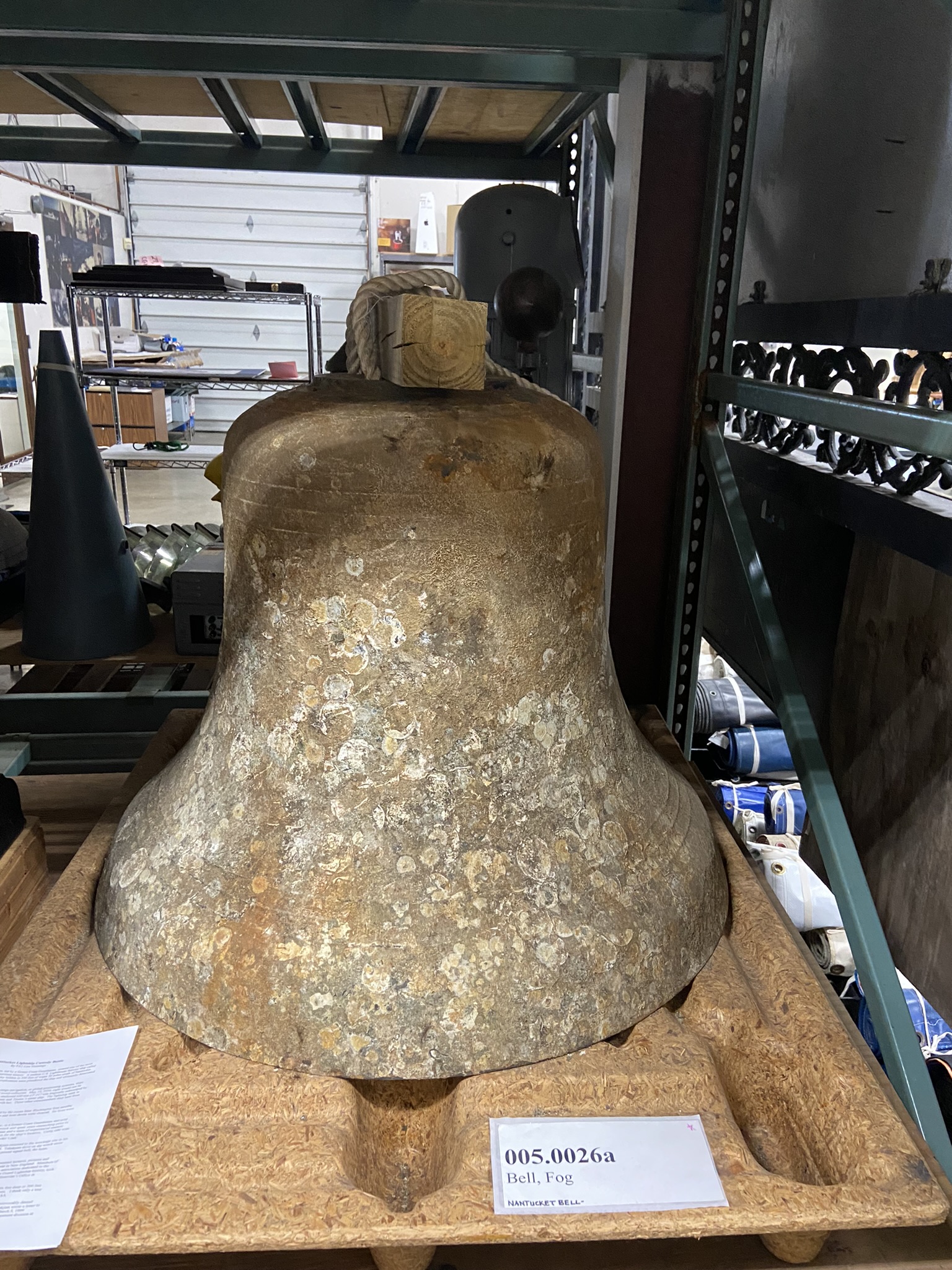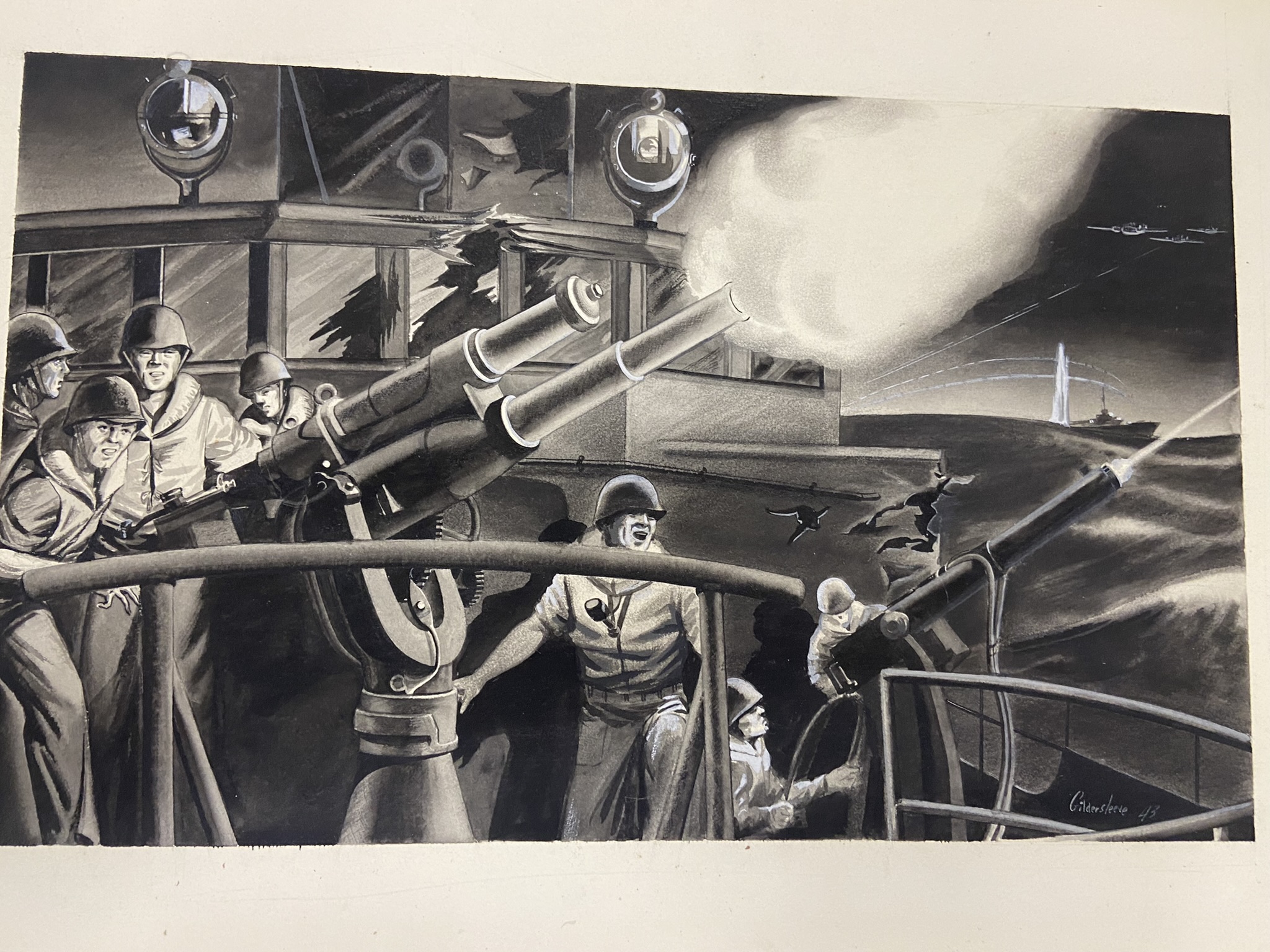In a nondescript industrial park in the suburbs of Washington, D.C., the Coast Guard Exhibit Center preserves 15,000 vital artifacts of the service’s history. Contractors are preparing a select set of these artifacts for transfer to the National Coast Guard Museum, which is scheduled to open its doors in New London, Connecticut.
“The contractors are measuring/weighing, assessing conditions, and photographing artifacts for their future display,” Coast Guard Heritage Asset Collections Manager Janet M. Pasiuk.
Pasiuk works at the Exhibit Center, a 13,000 square foot warehouse facility. Some of the artifacts it contains were in private hands before those holding them returned them to the Coast Guard’s custody. This applies to some of the Fresnel lenses catalogued and held there—heavy, exquisitely shaped glass structures created in the 19th century to magnify lighthouses’ light sources. Although they could potentially fetch thousands of dollars at auction, all surviving American Fresnel lenses are the property of the federal government.
More dramatically still, the Exhibit Center holds a bell from the sunken Lightship Nantucket (LV-117), which the U.S. Lighthouse Service—a legacy Coast Guard agency—operated. The ship sank May 15, 1934, after the British ocean liner Olympic sideswiped it, costing the lives of seven crew members. In 1998, a former Coast Guardsman located the wreck in 200 feet of water 50 miles south of Nantucket and took several objects, including the 1,200-pound bell. He eventually returned the objects, allowing future museum visitors to enjoy the history they contain.
 Not everything in the Exhibit Center has such a colorful history. The World War II Combat Art Collection is particularly notable, with pieces by famous period artists such as Anton Otto Fischer and talented unknown artist who served in the Coast Guard during the war. Among the striking artwork from this period is a dramatic charcoal drawing, the work of a Coast Guardsman in the Pacific Ocean during the heat of battle against Japanese forces.
Not everything in the Exhibit Center has such a colorful history. The World War II Combat Art Collection is particularly notable, with pieces by famous period artists such as Anton Otto Fischer and talented unknown artist who served in the Coast Guard during the war. Among the striking artwork from this period is a dramatic charcoal drawing, the work of a Coast Guardsman in the Pacific Ocean during the heat of battle against Japanese forces.
Other examples of the Exhibit Center’s artifacts include small boats, Lyle guns, armaments, plaques, cutter name boards, brow dodgers, uniforms, medals, patches, model aircraft, model cutters, and model small boats. You can also find navigational equipment such as binnacles, compasses, radio beacon clocks, sextants, and artifacts of the long range navigation (LORAN) radio navigation system developed in the United States during World War II. The bulk of the collection dates to the 20th century, but there are also some 19th and 21st century artifacts.
The Exhibit Center operates under the purview of the Coast Guard Historian’s Office, the official history program of the service, which collects, preserves, and promotes the history and heritage of the U.S. Coast Guard and its five predecessor agencies: the Revenue Cutter Service, the Life Saving Service, the Bureau of Navigation, and the Steamboat Inspection Service, as well as the Lighthouse Service. The Historian’s Office maintains, manages, and preserves an extensive collection of archival material and personal papers of Coast Guard service members for research and interpretation in its Special Collections Archive and Library. The photograph collection, numbering in the hundreds of thousands, is especially noteworthy.
The Coast Guard also operates an artifact loan program, with approximately 260 heritage asset loan agreements with Coast Guard units and offices, public museums and educational organizations throughout the United States.
In the News: